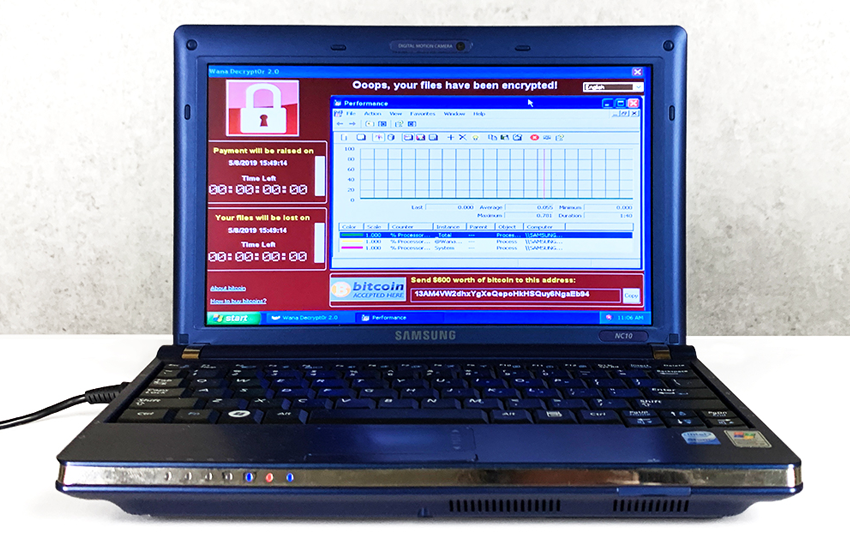The world of art aims to express emotions and deliver a feeling to viewers. Among art that evokes wonder and amazement, few pieces exist that actively threaten the security of the owner. One such dangerous piece was created by Goo O Dong, a contemporary artist whose work "critiques the modern day extremely-online culture". His work titled, 'The Persistence of Chaos' is the world's most dangerous laptop, and it has just been auctioned for $1,345,000 (approx. Rs. 9.3 crores).
According to the terms of sale, the buyer must acknowledge that they are "purchasing this work as a piece of art or for academic reasons, and have no intention of disseminating any malware". Six globally feared pieces of malware sit inside the airgapped 2008 Samsung NC10 laptop. The laptop itself runs Windows XP SP3 on a 10.2-inch screen. It has been sold with a power cord and a restart script. It ships with the malware installed.
The pieces of malware have caused a cumulative $95 billion in damages to businesses due to a lack of preparation. Dong collaborated with neural networking firm Deep Instinct to develop this piece in a controlled environment. Deep Instinct uses its deep learning algorithms to learn about malware and prevent such cyber threats.
The official website for the laptop details the malware that it hosts:
| Malware | Description |
| ILOVEYOU | The ILOVEYOU virus, distributed via email and file sharing, affected 500,000+ systems and caused $15B in damages total, with $5.5B in damages being caused in the first week. |
| MyDoom | MyDoom, potentially commissioned by Russian e-mail spammers, was one of the fastest spreading worms. It's projected that this virus caused $38B in damages. |
| SoBig | SoBig was a worm and trojan that circulated through emails as viral spam. This piece of malware could copy files, email itself to others, and could damage computer software/hardware. This piece of malware caused $37 billion in damages and affected hundreds of thousands of PCs. |
| WannaCry | WannaCry was a ransomware cryptoworm that surfaced in 2017 and piggybacked on EternalBlue, a security exploit developed by the NSA. It asked for a ransom in Bitcoin after encrypting all the files on and it created a backdoor in the system. It affected 200,000+ computers across 150 countries in damages. |
| DarkTequila | A sophisticated and evasive piece of malware that targeted users mainly in Latin America, DarkTequila stole bank credentials and corporate data even while offline. DarkTequila costed millions in damages across many users. |
| BlackEnergy | BlackEnergy 2 uses sophisticated rootkit/process-injection techniques, robust encryption, and a modular architecture known as a "dropper". BlackEnergy was used in a cyberattack that prompted a large-scale blackout in Ukraine in December 2015. |
Source: The Persistence of Chaos (link)
You can view a live stream of the laptop in an enclosure here.

















